Speak to a South Africa expert today
and start planning your tailor-made holiday

Alistair

South Africa has a myriad of activities to cater for everyone's bucket list and levels of adventure

Having lived and worked as a South Africa safari guide, I’ve had the opportunity to explore a myriad of places and experience a vast array of fun and interesting things to do in South Africa. Ranging from the absolutely bonkers to laid back and relaxing.
South Africa is well developed when it comes to hosting visitors, with a good infrastructure, plenty of amazing safari lodges and camps with a vast array of activities to cater for everyone’s tastes and level of adventure.
If you’re planning a holiday to South Africa, here are some of my favourite things to do in the Rainbow Nation. I hope you enjoy reading about them as much as I have remembering them.

Kruger National Park is huge! It’s over 2.2 million hectares in size, that’s roughly 8,500 sq miles – so there are vast areas to explore. There’s a great selection of lodges in and around Kruger, but for me, self-driving is great fun, you can take as much time as you want exploring the park and its wildlife, including the Big Five – as long as you're back in your rest camp before the gates close for the night.
There’s a lot of choice when it comes to the rest camps and accommodation – actual lodges and hotels generally tend to be located outside of Kruger on the peripheral boundaries of the park. Whilst the self-driving rest camps will be dotted throughout the various sections.
On a grand scale, Kruger is generally broken down in to three regions: North, Central and South. Each has its own benefits depending on what you want to see and experience.
Northern Kruger. The far north is less visited, making a more secluded experience and it is not uncommon not to see another vehicle for the entire day. The Pafuri and Punda Maria areas are some of my favourites with towering trees, large herds of elephants, and its prolific birding. There are good predator sightings here too, with lion, leopard, and wild dog being seen in the area.
Central Kruger The central areas are a little busier with visitors, but it’s still not too busy. Along the river systems, you’ll find towering trees as well as open savannah, and through the central corridor, you’ll find almost arid areas, but you still have plenty of opportunity to see wildlife with elephants and plains game aplenty here.
Southern Kruger The southern section, particularly around Lower Sabie and Skukuza, is big cat heaven. Leopards and lions love this area and are seen pretty much on a daily basis. Which is why it’s one of the more popular areas with visitors vying for a glimpse of a leopard asleep in a tree or a pride of lions on the move.
Being able to explore the park at your leisure with great company is just one of the reasons why this is on my list. And at the end of a day, depending on the camps you stay in, there’s an outside braai (bbq) area so you can cook and enjoy a lovely dinner whilst sipping on an ice-cold Savannah cider and watching an ocean of stars in the night sky above you. Bliss.



Sabi Sands is famous for its leopard, lion and other big cat sightings as these magnificent predators have, through generations, become relaxed around the safari vehicles, allowing you to have a close, yet safe encounter and potentially take some wonderful photos.
Throughout South Africa, there’s a myriad of private game reserves and high-end lodges, but the concessions in the Sabi Sands region of the Greater Kruger National Park are certainly some of the more renowned for having a really quality premium experience, with the standards of guiding generally being absolutely top-notch. Perfect for a luxury South Africa holiday.
Sabi Sands is part of the Kruger National Park, but areas of land are leased jointly by SAN Parks (South Africa National Parks) and the local communities. There’s no fencing between Sabi Sands and KNP, so wildlife is free to roam where it chooses. As with most other privately run reserves in South Africa, off-roading is permitted in the concession, bringing you closer to some of the wildlife, but not all. This is generally reserved for special sightings such as predators hunting and feeding, and also rare species which won’t often be encountered.



Driving through South Africa’s Fynbos along South Africa’s famed Garden Route between late August to mid-October is remarkable. It is awash, painted with brightly coloured flowers. Fluorescent oranges, pinks, purples, yellows, and white stretching as far as the eye can see – it’s a vivid display of colour and signifies the arrival of Spring in the area.
There are over 4,000 species of flowers in the area – no wonder it’s been inscribed as a UNESCO World Heritage Site. And if you get to the Hopefield Fynbos Show, make sure you try ‘waterblommetjiebredie,’ which is a stew, usually consisting of meat and the waterblommetjie flowers (also known as water hyacinth) found in the marshy areas in the Western Cape.

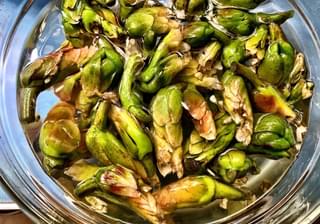

Now this is a proper little hidden-away gem that not many people know about. Situated a stone’s throw away from Mozambique’s southern border lies Kosi Bay. The area is rife with wildlife and bird species such as the palm nut vulture, with a big percentage of its diet consisting of the large, exceptionally tough nuts of the Raffia Palm tree.
From late October through to March, the Kosi Bay area is the perfect place to see leatherback and loggerhead turtles laying their eggs. October to December sees the nesting and laying season, and then from January through to March sees the emergence of the hatchlings as they struggle from their nest buried deep in the sand, then scrambling their way through the gauntlet of the beach.
It is a remarkable and emotional experience as you watch the hatchlings overcoming obstacles such as driftwood and dodging predators in the form of birds and crabs before reaching the open waters of the Indian Ocean. It’s estimated that out of every 1,000 turtles born, only a handful will survive to adulthood before eventually returning to the same beach to make their own nests, laying the next generation of hatchlings.
Turtle tours are often conducted during the evening or at night and must be accompanied by a local guide. Firstly, the sensitivity of the turtles and care needed not to disturb them when they’re digging their nest and laying their eggs. And secondly, the routes to the areas where the nesting and hatching take place are an absolute maze through the network of raffia palm forests and sand dunes.



On the coast of Kwa Zulu Natal lies Sodwana Bay. It’s classed as one of the best scuba dive sites in the world and I was fortunate to get my PADI diving qualifications here. There’s roughly 50km of reef complex to explore with a huge array of coral species and around 1,200 different species of fish. And if you go at the right time of year, you can dive with whale sharks, humpback whales, ragged tooth sharks, dolphins, turtles… the list goes on. If you’re diving with a guide, they’ll be able to introduce you to the world of nudibranchs, these soft-bodied gastropod molluscs famous for their brilliant, vivid colours, coming in all manner of shapes and sizes.
There are some lovely lodges in the area, and there are miles of pristine beaches to relax on and rock pools to explore. The Lighthouse restaurant, situated amid sleepy Sodwana Bay town, is a firm favourite with epic pizzas – the bacon, fig and Camembert was a particular favourite of mine.

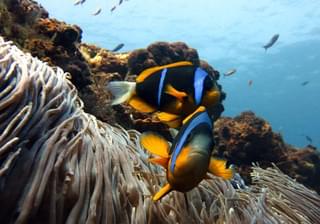

Working as a safari guide, I led many bush walks with guests tracking both white and black rhino on foot. It’s a fantastic, rewarding experience; locating and following tracks of rhino and then having the chance to see these phenomenal and critically endangered animals on foot, before leaving them peacefully, usually without them even knowing you were there.
The ethos behind walking safaris is to allow you to experience Africa and the sheer majesty of the bush in a more personal and intimate manner, discovering levels of detail which can easily be overlooked from a vehicle.
By slowing down the pace of a safari, you begin to notice the intricacies of bush. There’s detail everywhere you look, from the spherical remains of a dung beetle ball or the territorial claw markings of a leopard on a tree – all quite missable from the relative comfort of a safari vehicle.
It’s one thing to see a large animal from a vehicle, but it's an entirely different experience to view one on foot. Trust me, an elephant bull or a rhino looks a lot bigger when you’re not sitting in a safari vehicle. Bush walks make you an active participant in the animals’ world, rather than just a spectator. Your senses become acute, suddenly, your wind and sun direction become highly important to your tracking and approach of a potentially dangerous animal.
Next time you go on safari, it's definitely worthwhile checking to see if the lodge or camp you're staying at does bush walks - you'll gain a greater appreciation for the nature and wildlife.



Having lived in South Africa for a number of years, I developed a definite fondness for the stellar wines that this country produces, and I definitely have my favourites. Nothing too fancy, but I do like a good bottle of Pinotage, which is a very smooth and quaffable red. Dotted around the Western Cape there are around 300 wine farms, making this a wine lovers paradise.
There’s a plethora of options available if you wish to tour some of the vineyards; from privately driven luxury vehicles to open-air tram rides with strangers whom you will quickly make friends with after a few samplings. It is not uncommon for visitors to leave having purchased cases of wine from the vineyards to be shipped home, waiting for their return so they can reminisce about their journey over a locally produced glass of wine.
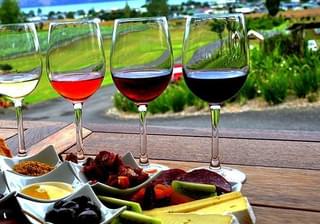


Between the months of late May to October, pods of humpback whales migrate north from their cold Antarctic feeding grounds in search of the warm waters of the Indian Ocean to give birth. And during this season, the whale sightings can be truly spectacular, with breaches, tail slapping, and all manner of intriguing behaviour.
Under the guidance of an experienced skipper, who knows the coastline and waters intimately, you’ll head out in the morning to go in search of these huge mammals. You might think that it’s like looking for a needle in a haystack, and you’d be right…but if you know the way the coastline works and the location of the continental shelf in the region, it makes the job a lot easier, as the whales will follow this. It’s possible to track whales while they’re swimming underwater if you know the right signs to look for! The whole experience is exhilarating from start to finish – how you get the boat into the water, to searching for the whales, and then how you get the boat out of the water… hold on tight, that’s all I’m saying…
Located within a UNESCO World Heritage Site lies the safe and sleepy town of St. Lucia, perched on the mouth of the Mfolozi River as it spills into the Indian Ocean. Miles of white sand as far as the eye can see and lined with the second longest and largest vegetated sand dunes in the world, which start far south of St. Lucia and stretch into southern Mozambique.
St. Lucia is also famed for its local hippo population (one of the highest densities in Southern Africa), which ventures into the town at night to feed on the grass of the residents’ lawns.
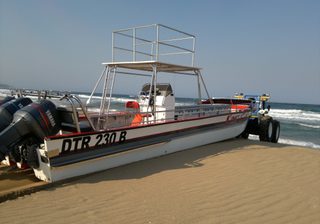

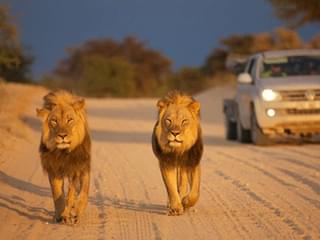
Where red sand dunes and scrubland fade in to the vast distance and herds of springbok, eland and blue wildebeest follow the seasons, where imposing camelthorn trees provide shade for monstrously huge black maned lions, vantage points for leopards and a myriad of raptors… if you want to really get in to the wild, this park is the perfect opportunity. The name Kgalagadi translates from the local tribal dialect, Bantu in into 'the land of thirst', and it's not difficult to see why if you travel here during the dry, arid months.
There is accommodation dotted around the park with a mixture of rest camps, as with Kruger, and several wilderness camps for those wanting to experience a true bush experience. Kgalagadi, located in the Northern Cape, is sandwiched between Namibia and Botswana. It is possible to explore the Botswana side if you stay for a couple of days at least. A much more raw experience than with Kruger, and you’ll need to be driving a sturdy 4x4 safari truck.


Wondering when to visit? Take a look at this guide on the best time to visit South Africa.
Looking for some more inspiration? Take a look at our best safari holidays ideas, our favourite family safaris, our big five safari guide or our top African safari honeymoon suggestions.
There’s plenty more to do in South Africa than what I’ve mentioned, from bungee jumping at Table Mountain, deep sea and sport fishing, hiking through the Drakensberg Mountains, and riding the famous Rovos Rail luxury train. But if any of these have whetted your appetite to travel to South Africa and try any of the above, simply get in touch.
and start planning your tailor-made holiday

